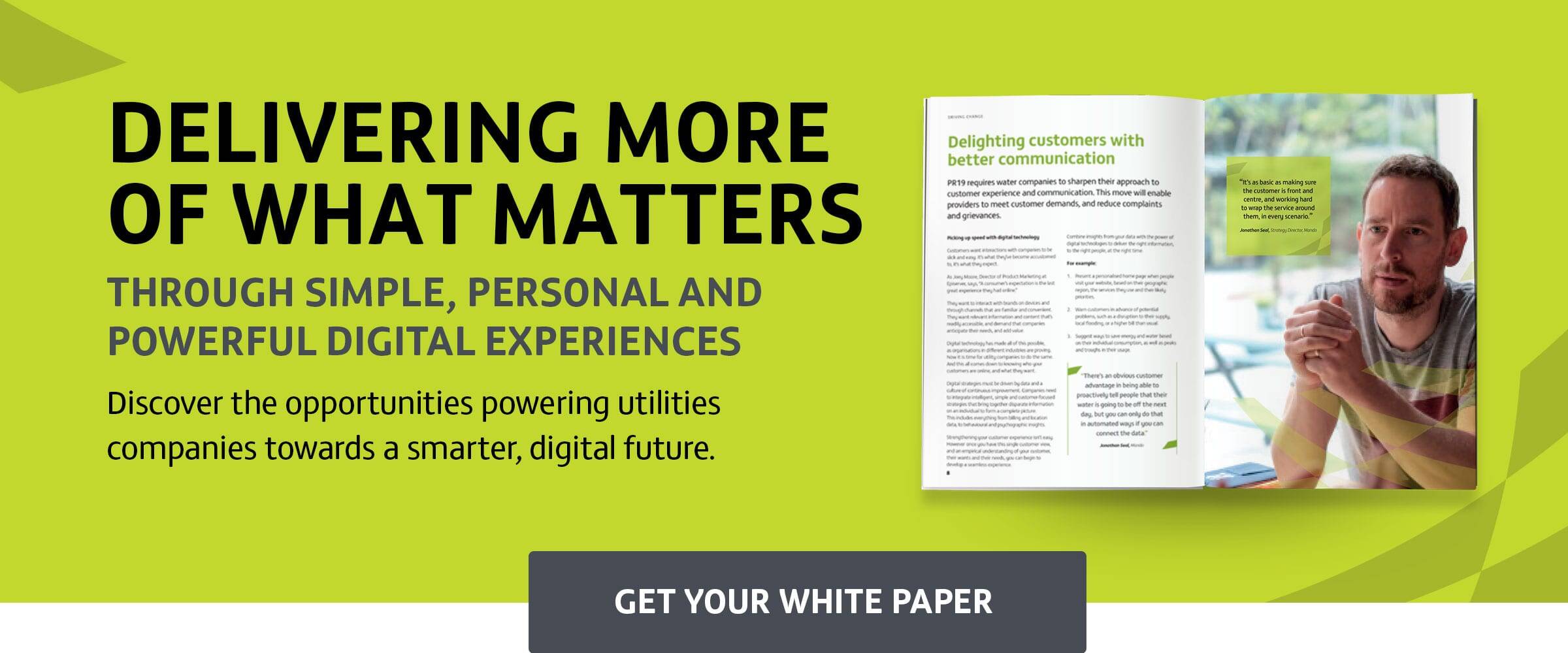This is the Sponsored paywall logged out
Ofwat’s latest price review (PR19), and Ofgem’s next price control framework (RIIO-2) are looming on the horizon. Both urge utilities companies to meet new standards, drive innovation and plan for the long term.
But with the utilities sector transforming swiftly, the pressure is on for providers to adapt and ensure they deliver more of what matters to customers.
As a leading digital agency in the utilities sector, we’ve been delving into what it’s actually going to take for utilities companies to thrive in a digitally-driven world…
What do today’s customers expect?
Today’s customers expect convenience, speed and personalisation from their utilities providers, and want to interact across a range of digital channels.
They’re becoming accustomed to the incredible, pre-emptive experiences available from the likes of Netflix and Amazon. And it’s this wider shift in mindset that is increasing the pressure on utilities companies to innovate their offering and transform existing statistics:
◊ Gas and electricity switches surged by 28% in 2016, reaching 7.7 million in total (Ofgem, 2017).
◊ Less than half (45%) of household customers in the water industry are likely to recommend their water company to friends or family (Consumer Council for Water, August 2015).
◊ 33% of people switching providers, cited poor customer service as a major reason (Echo Managed Service, 2017).
Companies must find ways to empower their customers, like making it easier for them to self-serve or simplifying how they can switch providers.
What challenges is the industry facing?
Utilities companies are facing pressure from all angles. If it’s not changing customer behaviour and increased regulatory pressures, it’s the wave of agile disruptors entering the marketplace, using digital and data to seize market share.
According to the Uswitch Energy Customer Satisfaction Report (2018), the disruptors are achieving better satisfaction scores than the big six. Three of the newer entrants also accomplished scores of nearly 90% or above.
All of this comes at a time when the idea of a connected home is on the rise and digital devices, like smart meters and virtual assistants, are surging in popularity.
As well as allowing providers and customers to enhance their relationship with more personal, and instant communications, these changes also empower customers to take control of their usage.
It signals an opportunity for utilities companies to increase relevance, deepen engagement, and establish a platform through which they can sustain a positive customer relationship.
The opportunity is in digital. Providers must embrace emerging technologies and embed them into their operation to help anticipate the needs of today’s customers. All while driving down costs and streamlining the experience.
Transforming the digital customer experience
Utilities companies have a wealth of customer data at their fingertips, and it’s this valuable insight that can give providers a strong competitive advantage. When combined with the right digital technologies, customer data will empower companies. It helps add value to customers, enables the development of new products and services, and closes the gap with industry leaders.
Customers expect added value, personalised content and a seamless experience, regardless of the channel they use. Digital enables this.
However, embracing technologies and transforming the customer experience doesn’t come without its challenges. Especially with PR19 and RIIO-2 just around the corner. That’s why we created our latest white paper, Delivering More Of What Matters, Through Simple, Personal and Powerful Digital Experiences as we look to the opportunities and challenges facing utilities companies, such as data, personalisation and communication.
This is not just about complying with PR19 and RIIO-2. Providers must evolve in order to stay relevant, compete and, ultimately, to thrive. Understanding how digital technology can enable you to do this is imperative, particularly as new entrants continue to join the fray.

Please login or Register to leave a comment.